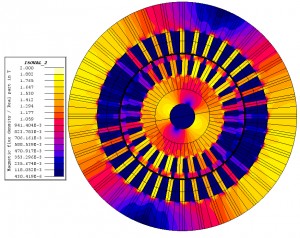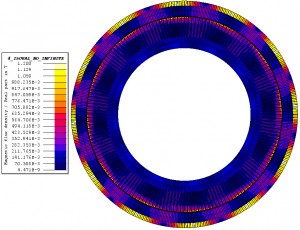High Pole Count, High Fundamental Frequency Design for High Power Density Electric Machines
High Pole Count, High Fundamental Frequency Design for High Power Density Electric Machines
MSEE student Andy Yoon with adviser K. Haran
Induction motors (IM) and permanent magnet synchronous motors (PMSM) are major types of electric machines prominent across many industries. PMSM, proven to require low maintenance with a long lifespan, with higher power density and efficiency than IMs, is much utilized by the electric vehicle industry. IM, known to be reliable, rugged, and robust, has earned the title, “Workhorse of the Industry.” Nevertheless, both machine types have room for improvement in power density.
Funded by the Grainger Center for Electric Machinery and Electromechanics and NASA, current efforts are being made to help advance state-of-the-art IM and PMSM technology by reducing machine size and weight while keeping output power unchanged. Very high frequency and high pole-count design are being explored to reduce the use of heavy alloy in the design, while addressing corresponding electromagnetic and electrical implications. Detailed analyses are being performed using a finite element analysis (FEA) tool, which allows quantification of challenges and detailed design optimization. The opportunity for increased power density using the high-frequency, high pole-count design has been demonstrated for PMSMs, and effects of a similar approach to IMs are currently being explored. Figures 1 and 2 illustrate an example of a flux density contour map obtained for a 2-pole, 60 Hz baseline IM, and a 12-pole, 360 Hz IM, respectively.

